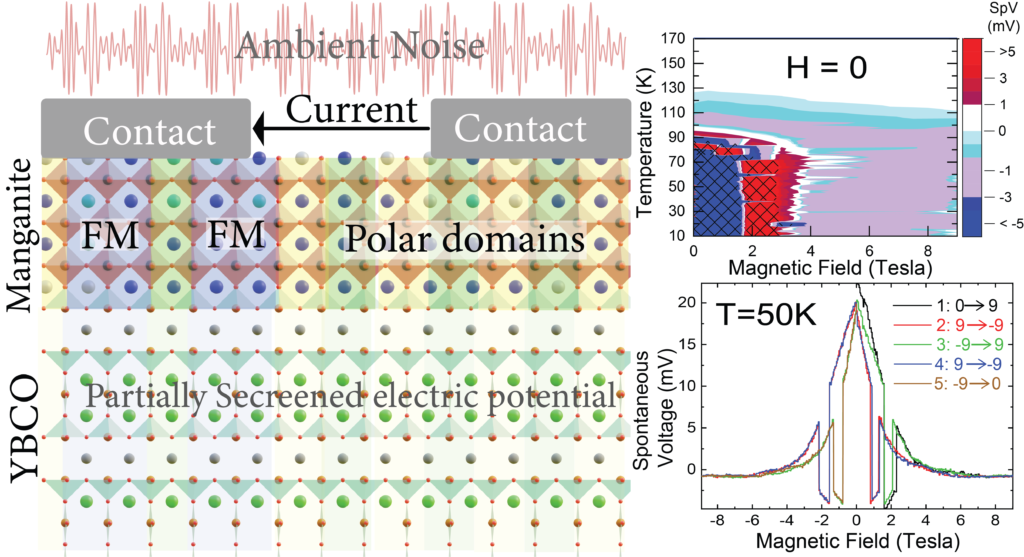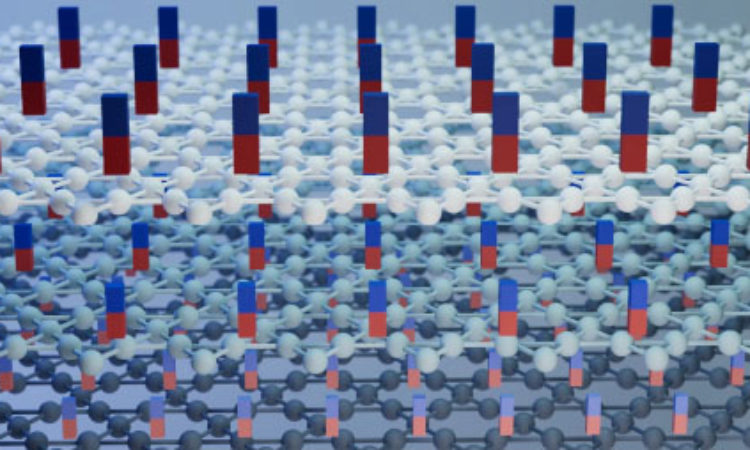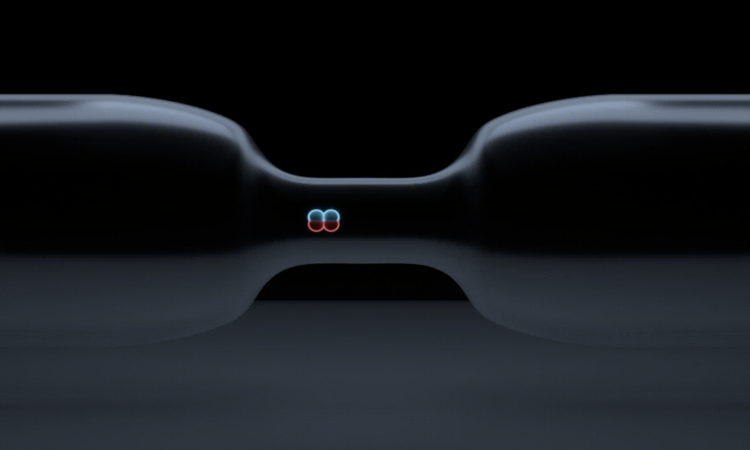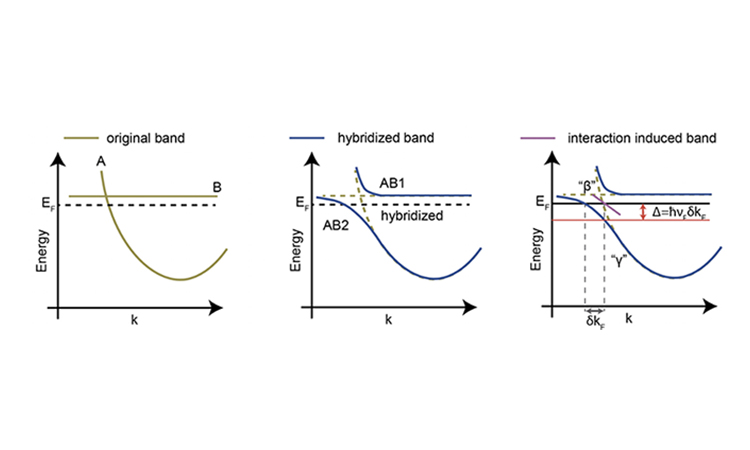Spontaneous voltage and persistent electric current from rectification of electronic noise in cuprate/manganite heterostructures

By Subhrangsu Sarkar, University of Fribourg
This report is about the observation of an unusual spontaneous voltage (SpV) that develops in epitaxial heterostructures made of the high-Tc cuprate YBa2Cu3O7 (YBCO) and the manganite Nd0.65(Ca,Sr)0.35MnO3 (NCSMO). The latter hosts competing orders, in particular, a majority phase made of a polar charge-orbital-ordered and antiferromagnetic insulator and a minority phase that is non-polar, ferromagnetic (FM) and conducting. The SpV also strongly depends on the thickness of the YBCO layers, which appears to have a large screening length of ~ 5 nm.
When cooled below ~130 K (TSpV) these heterostructures generate a SpV signal of several tens of millivolts, that can be used for driving a persistent current across an external circuit. The SpV also depends on various external parameters, like temperature (T), magnetic field (H), or electric current (I) passing through the sample. It is also affected by the size and shape of the contacts. Particularly interesting is the magnetic field dependence of the SpV below about 80 K, where the YBCO layers are supposed to be superconducting. Here, the H-field loops of the SpV exhibit large, jump-like changes at intermediate values of H that are hysteretic and reproducible and thus enable a memory functionality. Notably, these loops display an even symmetry with respect to the sign of the H-field, a feature that is rarely observed in systems with a spontaneous voltage/current.

We explain the SpV in terms of a rectification of ambient electronic noise. The underlying ratchet-type potential originates from a phase competition within the manganite layers, notably between a majority antiferromagnetic and charge/orbital ordered phase that is polar and has charged domain walls and a minority phase that is non-polar and ferromagnetic. This ratchet-potential is only partially screened in the thin YBCO layers where it leads to a rather efficient rectification of ambient noise.
Based on article published in Nature Communications



